“A cinematographer is a visual psychiatrist–moving an audience through a movie […] making them think the way you want them to think, painting pictures in the dark,” said the late, great Gordon Willis. As we continue our year-end coverage, one aspect we must highlight is, indeed, cinematography. From talented newcomers to seasoned professionals, we’ve rounded up the examples that have most impressed us this year.
Aftersun (Gregory Oke)
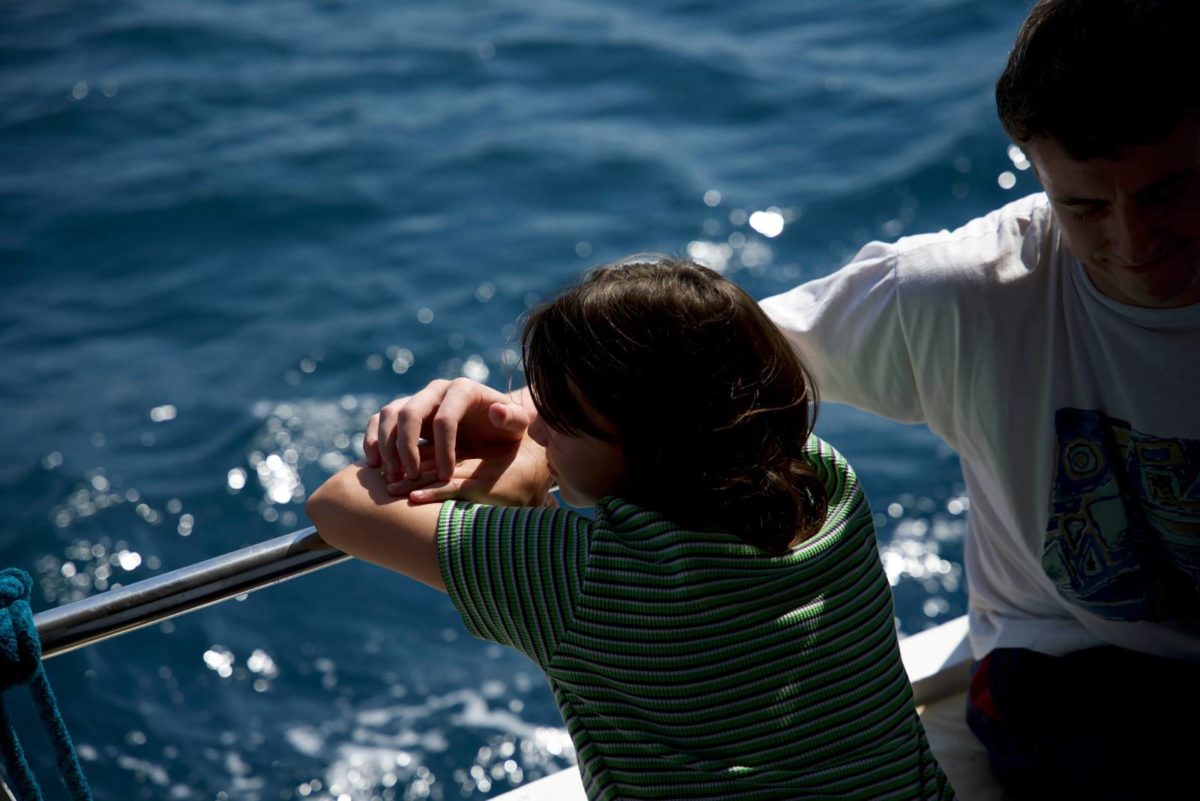
It’s been seven months since I unassumingly saw Aftersun at an unspeakable morning hour in the Director’s Fortnight sidebar at Cannes, and I haven’t stopped thinking about that polaroid shot. Just after a photo is taken, the camera cuts to a long, still take of the polaroid image slowly apparating. It’s the shot I’ve thought about most this year (and not just because it’s clever). In narrative context it delivers a heavyweight moment. But in its assured simplicity and affecting achievability, it’s the most refreshing kind of reminder that anyone can find exciting visual forms and shoot a gorgeous, inventive film if they’re thoughtful about their story and willing to embrace creative limitations. DP Gregory Oke has only shot two features; you’d think he’s shot a thousand. The imagery in Charlotte Wells’ debut is as bare and economical as the best cinematography can be. There’s a degree of bold, unerring confidence in Oke’s chaste shot design: compositions are sumptuous and spare; yet the frame always feels full, the colors affecting. The phantom-like emphasis on loose thematic connections across shots sets a contemplative tone and draws the viewer into a depth of feeling that can only be evoked by work this brilliant. – Luke H.
After Yang (Benjamin Loeb)
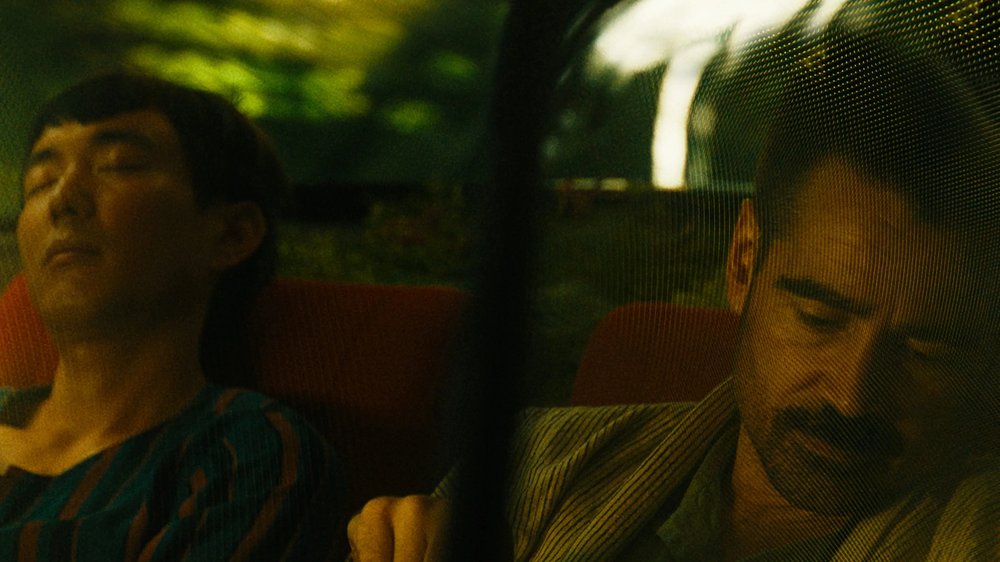
Benjamin Loeb’s gorgeous cinematography in Kogonoda’s After Yang looks at the memories of an unhuman boy. It’s lush, detailed, hyperspecific. It shows a postmodern world, clean to look at, polished by Loeb’s camera. There’s a sentimentality in the way Loeb shoots this grieving family, in the way we watch Colin Farrell steep tea, in the way we experience memories often much brighter, more colorful than present day. Loeb fixates on moments, on characters unable to shake emotions, rarely breaking down. Kogonada’s stunning vision is realized once again. – Michael F.
The African Desperate (Daisy Zhou)
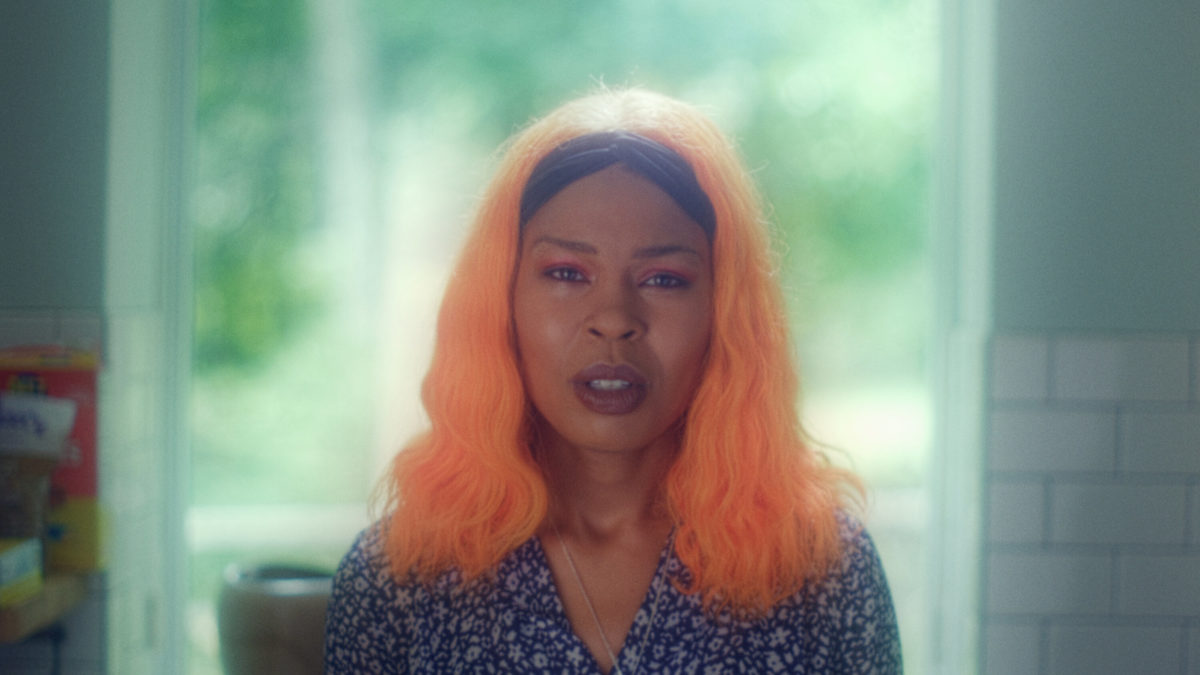
Starting out of the gate with a burst of energy that never lets up, Martine Syms’ The African Desperate is an electrifying ride through a day in the life of Palace Bryant (Diamond Stingily) as an MFA grad on her final day of academia. Eschewing the standard trappings of the art school drama, cinematographer Daisy Zhou brings a vibrant style to every frame, from a unique approach to digital communication to party scenes awash in a neon glow to drug-fueled trips in which reality becomes blurred. As we witness the ups and downs of Bryant’s journey over this brief period, Zhou impressively captures the proceedings with the ideal mix of liveliness and serenity. – Jordan R.
Ambulance (Roberto De Angelis)
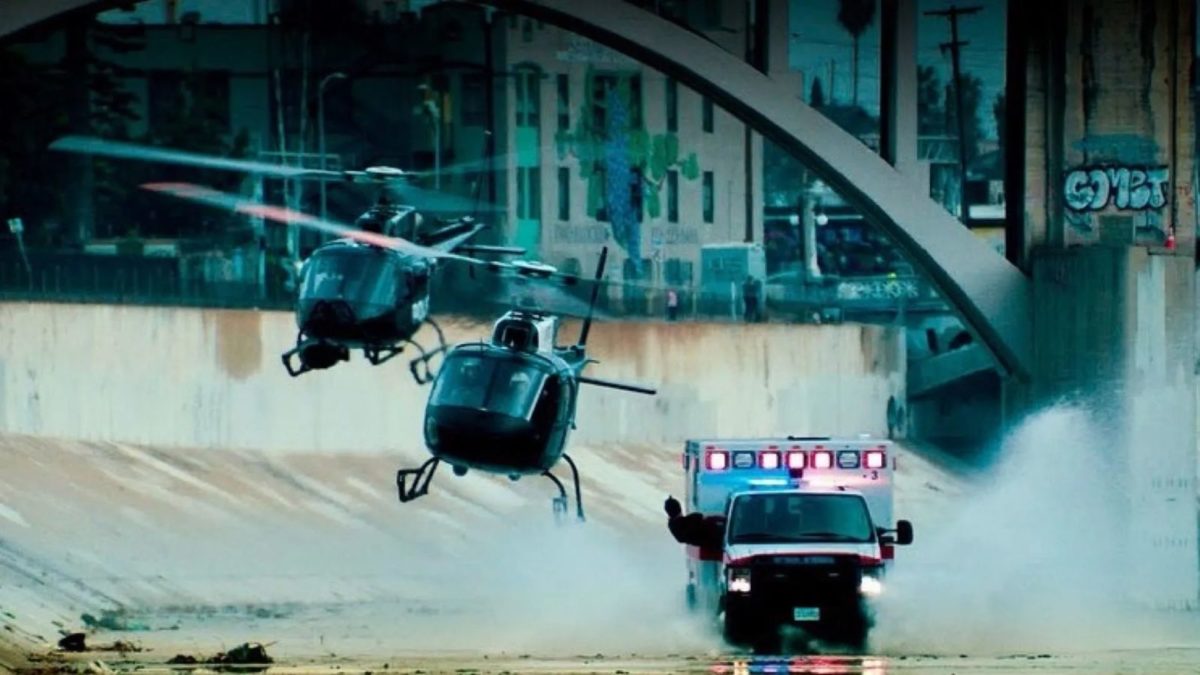
On only his second feature––the first being Agnès Varda’s Faces Places—cinematographer Roberto De Angelis brought the kaleidoscopic destruction known as Bayhem to life in Michael Bay’s dizzyingly fun and explosive Los Angeles heist film, Ambulance. A high-octane, purely cinematic action picture in which the drone camera gets tossed into the blender, providing more than just overhead coverage. Instead they capture all the alluring details of skyscrapers, explosive cars, and gun barrels going bang in a wild array of angles. The camera movement in Ambulance becomes the chief storyteller, capturing all the cliched nonsense of Bay’s vision in a delightfully hectic glee. – Erik N.
Armageddon Time (Darius Khondji)
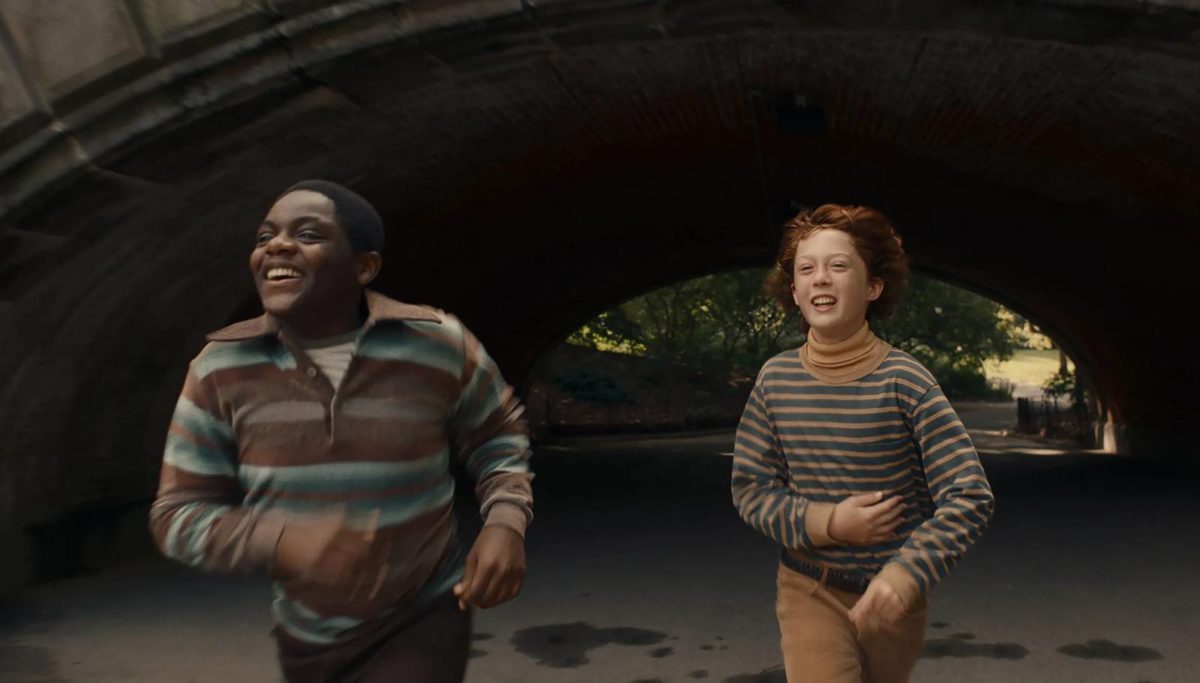
In his third collaboration with James Gray following Lost City of Z and The Immigrant, cinematographer Darius Khondji is tasked with mastering the visuals of 1980s New York City in the deep, golden glow of nostalgia that Gray baked into his script. Whether it be the warm interiors of the household or cold streets of autumn as kids go to school, Khondji captures the deep introspection and regret that often permeates Gray’s best work. As fathers and sons reconcile their differences, Khondji bears in mind the haunting nature of loss in a beautiful natural afterglow. – Erik N.
Benediction (Nicola Daley)
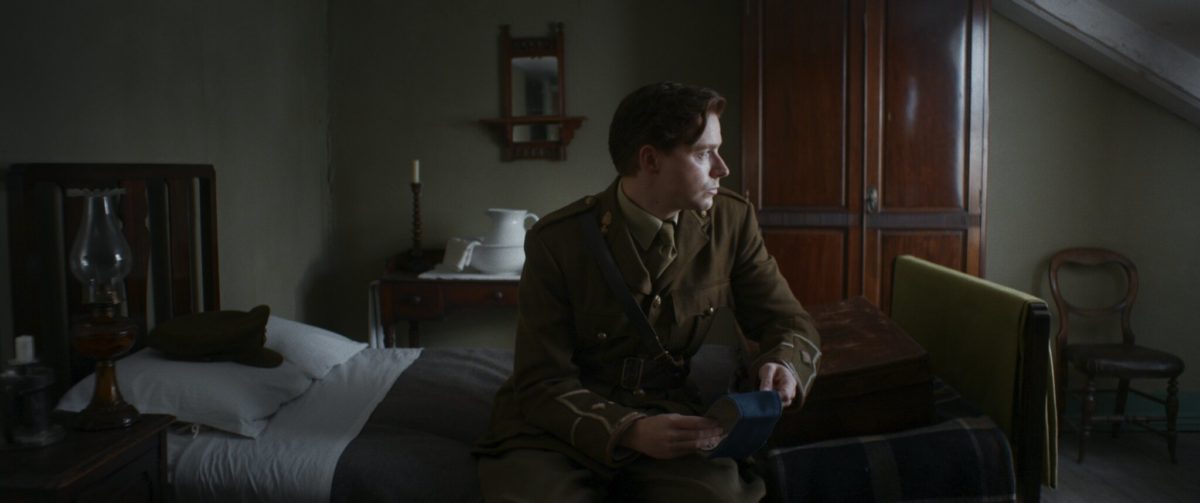
Like the societally neutered disposition of its subject, Siegfried Sassoon, Terence Davies’ Benediction often looks finely askew. Every grandiose, sweeping camera movement by Davies and DP Nicola Daley is pointedly undercut with a color palate and lighting scheme that’s too pallid or harsh. And whether following Sassoon on a tour of monied 20th-century parlor rooms or marinating in the self-flagellation of his twilight years, an unpleasant stillness persists. Even the purest moments are rendered with a distorted view––uncanny valley digital fantasies where the world could have been different. – Michael S.
Blonde (Chayse Irvin)
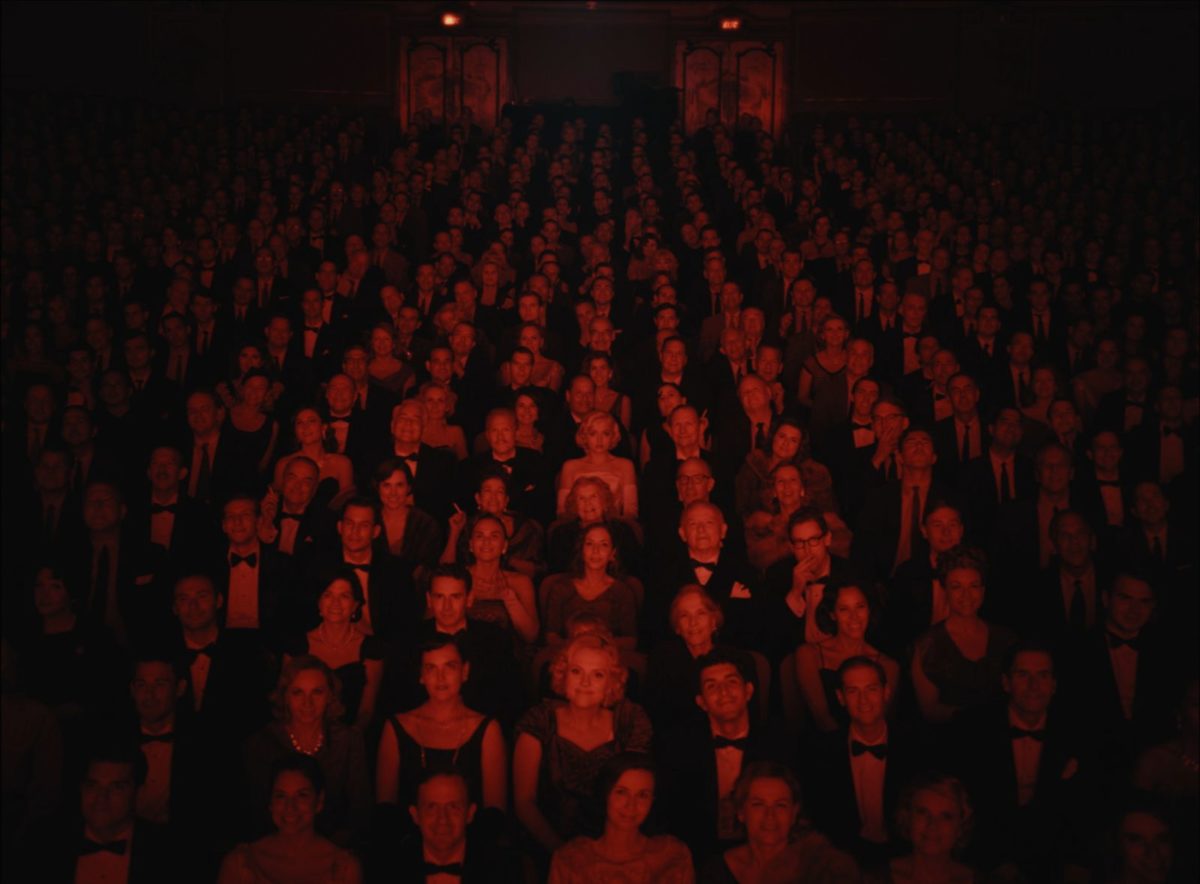
Whether it be the disorienting fire that sets the film ablaze at the beginning, the gorgeous transitions from bedsheets to waterfalls, or the fractured, hallucinatory nature of the black and white photography, Chayse Irvin and Andrew Dominik created a dreamlike world for the emotional stasis of Marilyn Monroe. While staying faithful to the surface of some of Marilyn Monroe’s iconic looks, the duo created an emotional state attuned to the Joyce Carol Oates novel. Blonde dares to often switch frames, ratios, and color palettes for the intuitive process of weaving together the death spiral of one of Hollywood’s mythic legends. – Erik N.
Il buco (Renato Berta)
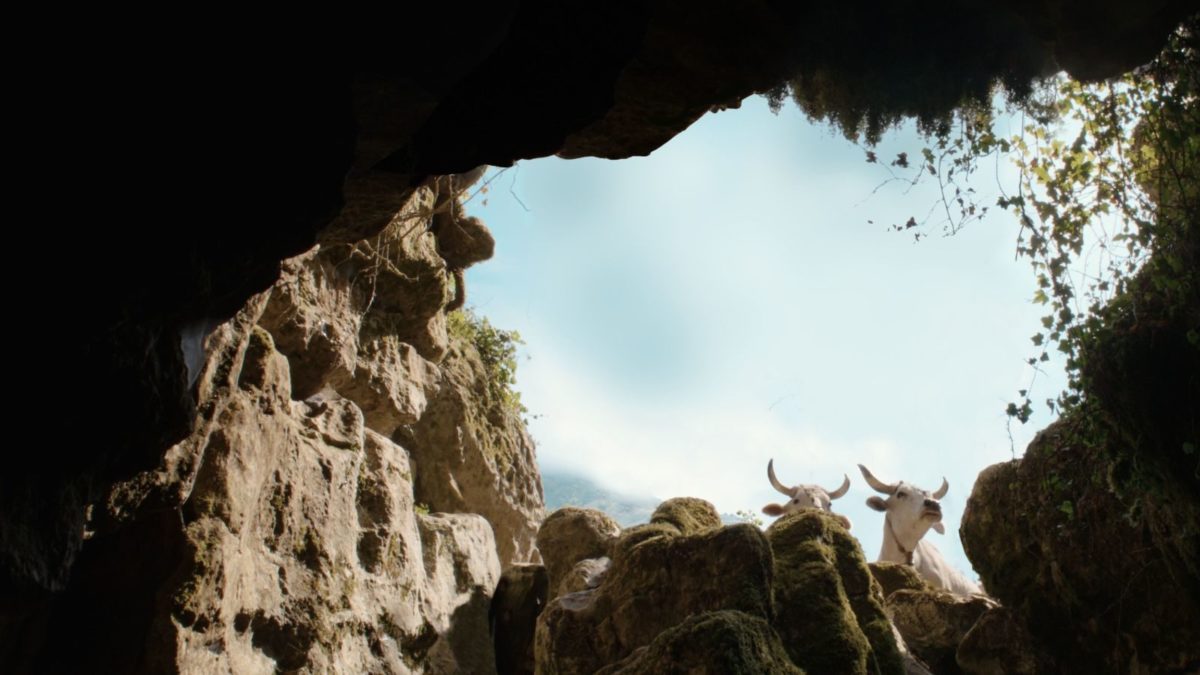
With nearly every technical achievement cataloged in detail for moviegoers online, the concept of “movie magic” has been almost completely eradicated—its preservation largely a fool’s errand. It’s in this climate, while marveling at the early cave sequences in Il buco, that my mind drifted to: “How did they achieve this?” with the follow-up “…and so beautifully?” This is not a film serviced by focusing on such trivial details; I instead chose to let its imagery of near-wordless exploration wash over me. Swiss cinematographer Renato Berta’s compositions extracts the natural beauty of the southern Italian countryside and the dark, amber-lit caves in equal measure. His static frames perfectly service director Michelangelo Frammartino’s show-don’t-tell storytelling which manages to feel fresh in an era where the slow-cinema movement has perhaps reached a natural endpoint. – Caleb H.
The Cathedral (Barton Cortright)
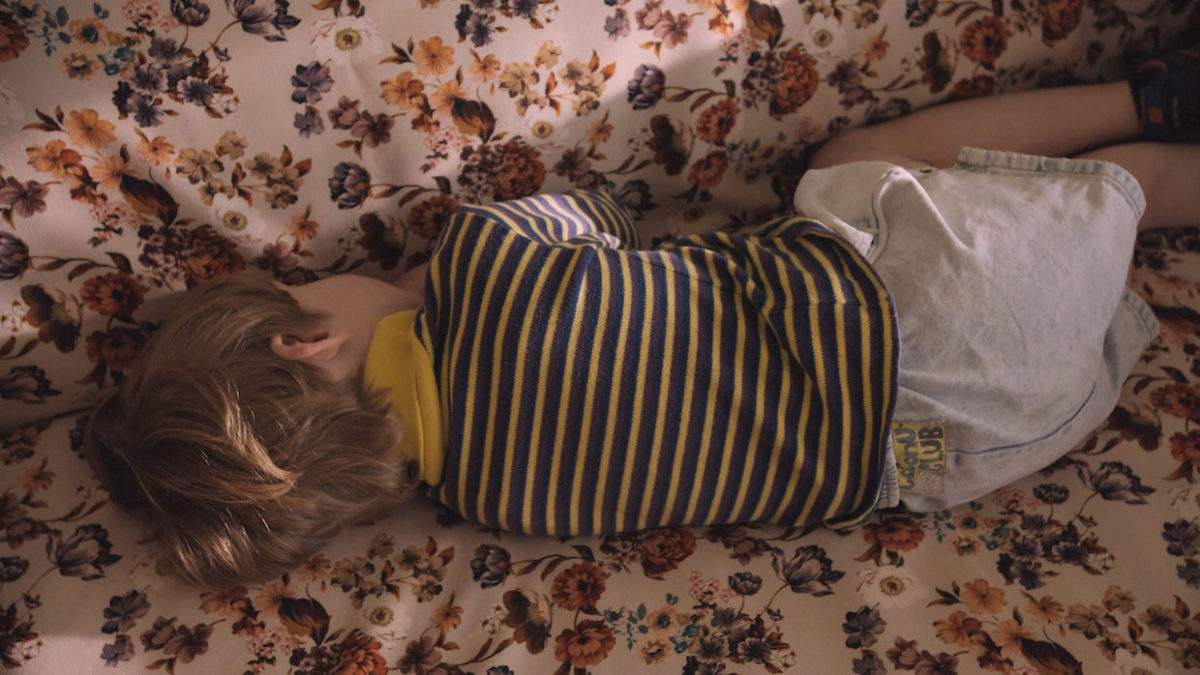
Director Ricky D’Ambrose and DP Barton Cortright’s collaborations stand as a nice contrast to the largely handheld, grainy aesthetic that has come to dominate much of the New York post-mumblecore landscape. For their fourth film together (and second feature after 2018’s Notes on an Appearance), D’Ambrose tackles the personal, looking back at his childhood on Long Island. The pair eschew clichéd, quasi-experimental visual techniques that largely dominate depictions of memory in cinema, opting for an approach that is appropriately fragmented yet rigorously staged. What results is one of the more original depictions of memory in recent years. – Caleb H.
Crimes of the Future (Douglas Koch)
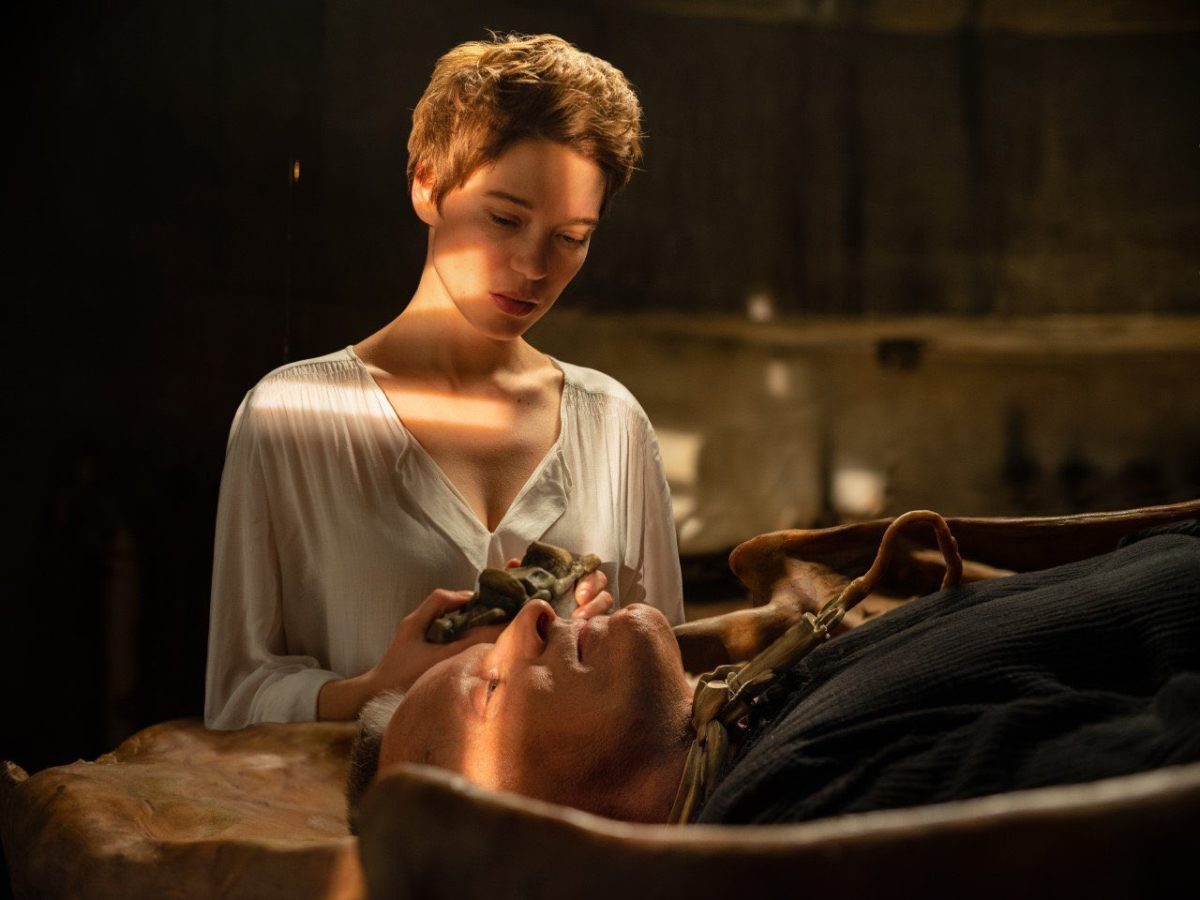
The eroticism of new flesh and grotesque exhibitionism of body dysphoria as new art unveils itself was captured with eerie intimacy by cinematographer Douglas Koch. In what is Cronenberg’s most self-referential film, the camera pans and lures over fleshy technology reminiscent of other works from the Canadian auteur—Videodrome, eXistenZ, The Fly. Koch punctuates scenes with deep shadows and a nasty darkish hue as bodies forge and alliances get crossed. Crimes of the Future is one of his most beautifully rendered films in a long, over-arching career filled with body horror. – Erik N.
Decision to Leave (Kim Ji-yong)
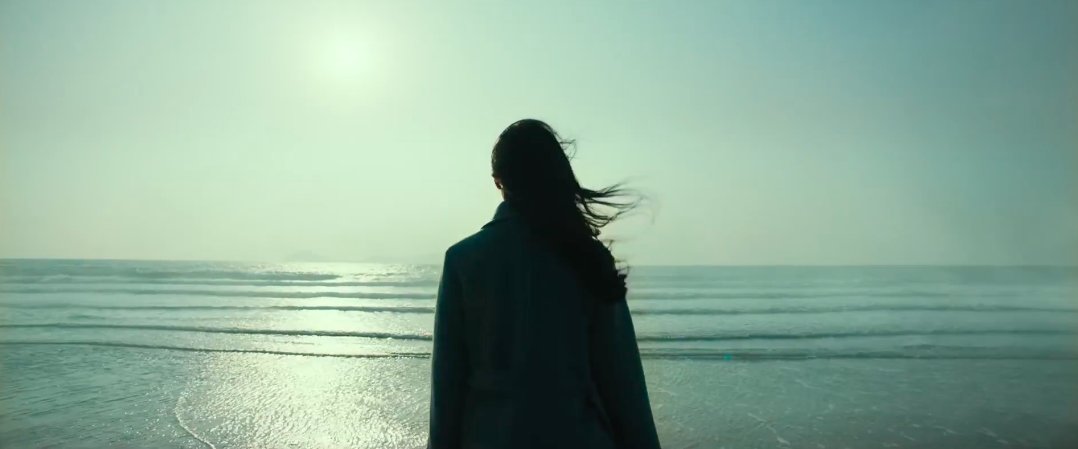
To watch a Park Chan-wook film is to relinquish control and be carried within the hands of a master. Cinematography, sound design, VFX—each element seamlessly integrated and of one piece. Park’s first collaboration with cinematographer Kim Ji-yong is flamboyantly stylish, yet somehow never plays as distracting. Text messages appear as reflections that originate from inside the phone, a chase sequence briefly transitions to shaky handheld, a stakeout suddenly becomes a fantasy sequence inside the mind of Detective Hae-jun—Decision to Leave is Park’s most visually confident and pleasurable movie yet. – Caleb H.
EO (Michał Dymek)
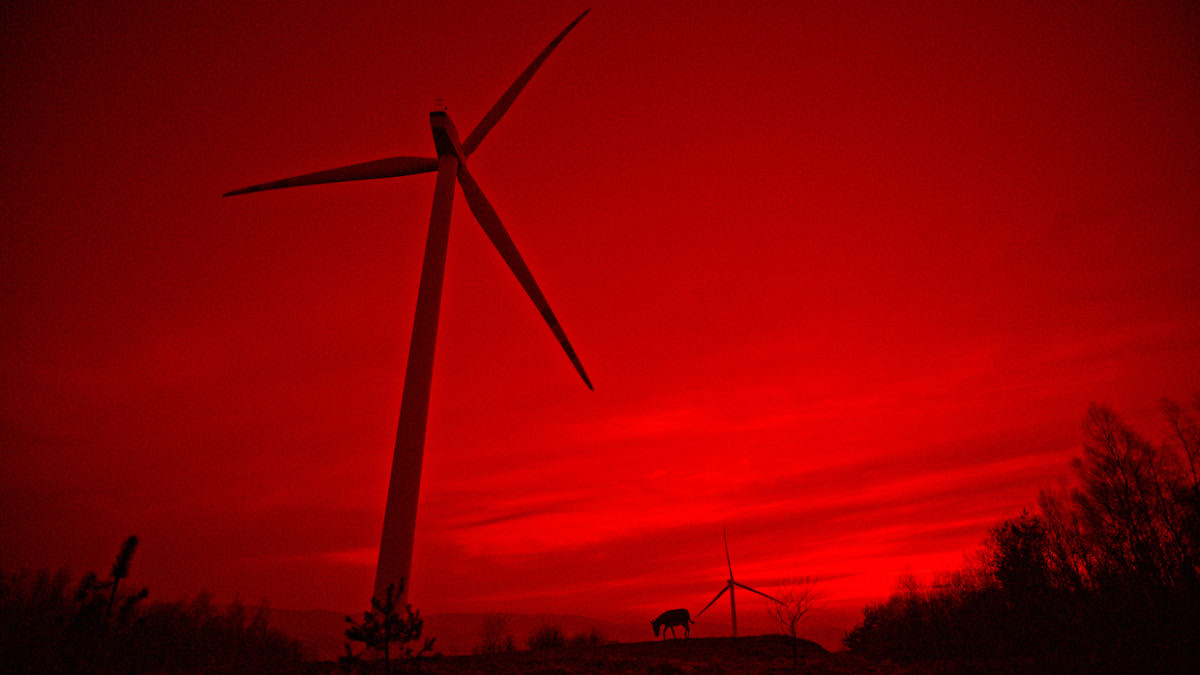
Descending into a thick, blood-red forest cast in pitch-black shadow, the camera races along the surface of a creek winding through the woods for a long while before it finds itself in the open sky facing down a wind turbine. Still charging ahead, the camera suddenly begins to barrel roll at the same speed of the turbine, flipping us over and over again like we’ve been tossed into a washing machine. It’s only one of the seemingly endless number of visual aesthetics and expressive techniques employed in Michael Dymek’s prismatic work on EO, Jerzy Skolimowski’s Polish Au Hasard Balthazar remake for the modern existential state, the 21st-century human condition. A film that arrests your empathy through the erratic journey of a wandering donkey, EO is a spectacle of impressionist cinematography that says more about being human than perhaps any 2022 movie with a human at the center, in large part due to Dymek’s range: a rollercoaster of lenses, movements, and styles as breakneck and unpredictable as life itself. From a crisp black-and-white music video to a cold-colored waterfall in hypnotic reverse to a hazy, Lubezki-esque dream state with bleary edges to a lens seemingly dropped into a warped glass of water, the style characterizes and emotes on behalf of the mute protagonist better than most dialogue, reminding us what the most thoughtful cinematography can achieve in character and theme. Leave it to an octogenarian legend to inspire a burgeoning 32-year-old’s best work. – Luke H.
The Eternal Daughter (Ed Rutherford)
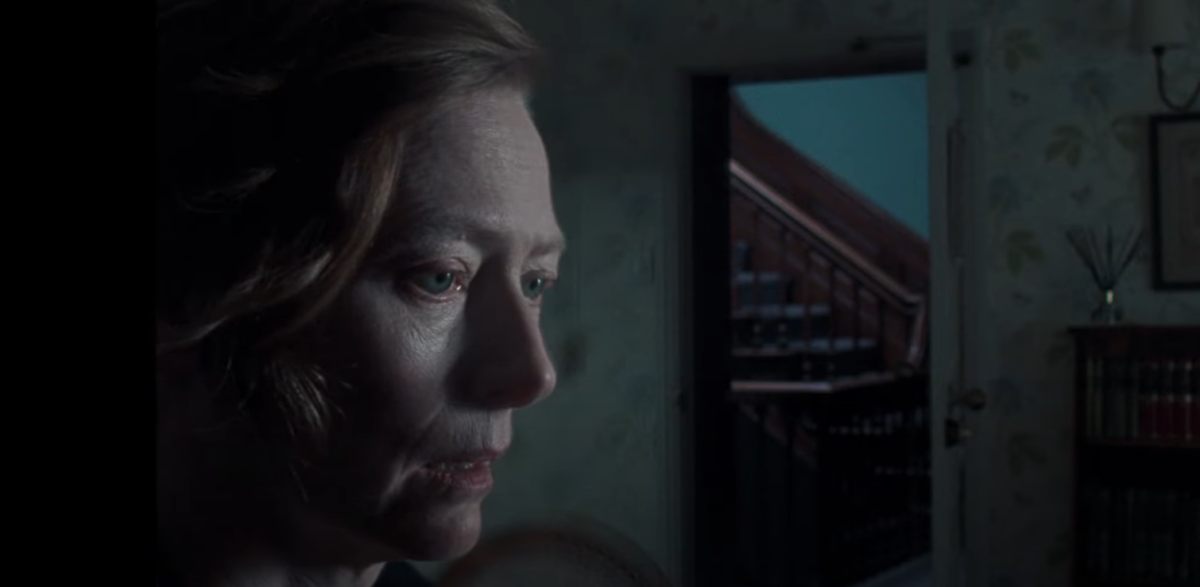
With her latest work, shot surreptitiously in the early part of the pandemic, Joanna Hogg brought elements of horror and the oneiric into her heretofore-scrupulously realist filmmaking, and its visual identity pleasingly follows suit. Reuniting with Ed Rutherford from the now-slightly overlooked pre-Souvenir part of her career (where her films struggled for exposure outside the U.K.), the director revels in opportunities to be more expressive with light and shadow, draping dual-lead Tilda Swinton in chiaroscuro shades and shimmering nighttime fog. In lieu of a proper scene partner, with the actress playing both mother and daughter, light (or its absence) in that eerie hotel more than compensates. – David K.
The Girl and the Spider (Alexander Haßkerl)
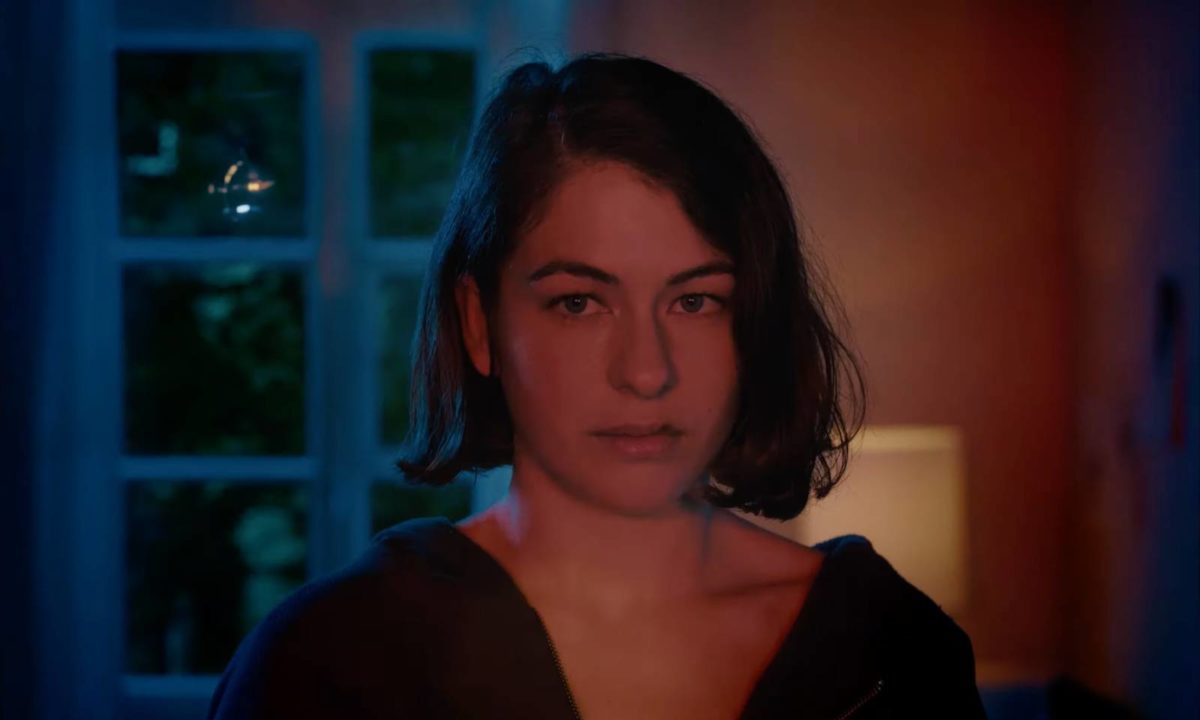
For a film primarily taking place in just two apartments of a single building, the challenge of cinematographer Alexander Haßkerl was set from the start. That he manages to make the proceedings one of the most exciting dramas of the year marks quite the success. As he nimbly catches the slightest of gestures and glances between our small ensemble, The Girl and the Spider becomes a mini-masterpiece of emotions left unsaid. Along with flashes of the surreal, such a striking vision of a witch-like character on top of the roof, the Zürcher brothers’ latest expands ideas found within their debut The Strange Little Cat in invigorating ways. – Jordan R.
A Love Song (Alfonso Herrera Salcedo)
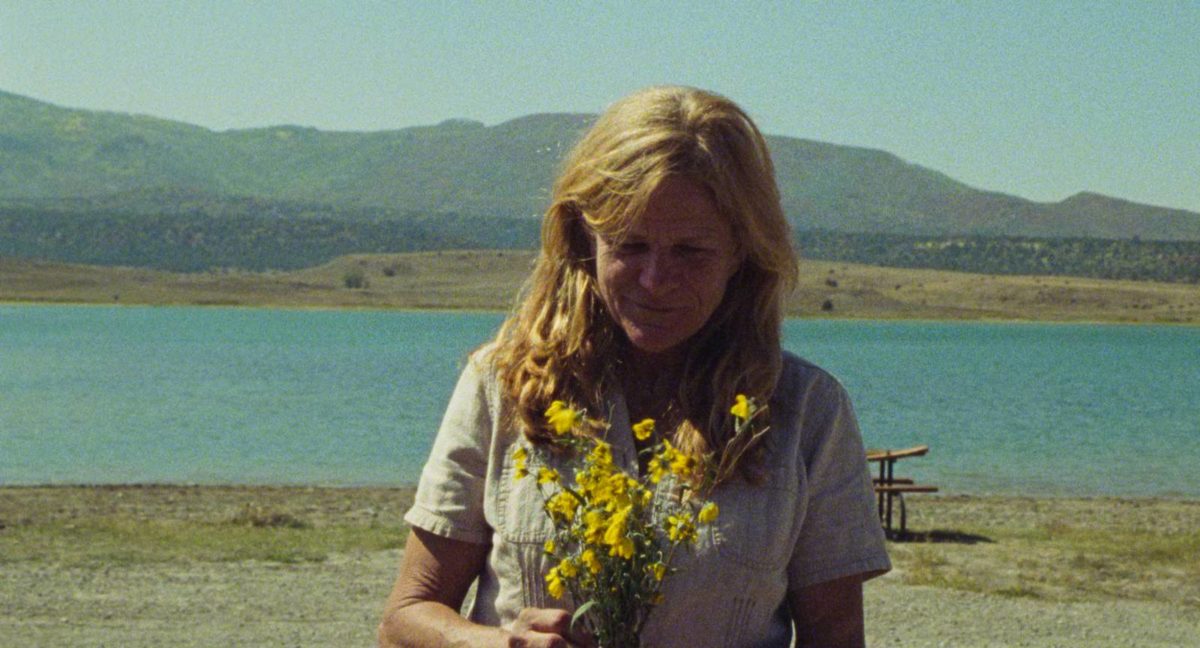
The landscape of Colorado is on full display in A Love Song, shot by Alfonso Herrera Salcedo. The camera’s often stationary, locked in on Dale Dickey’s face worn by decades of traveling and years of grief. He uses the rolling hills and soft lakes to frame a narrative of nostalgia, of memory, of slight regret. Salcedo is happy to allow Dickey and co-star Wes Studi to fill the screen without necessary action, the intimacy of the lens taking a backseat to these two people. – Michael F.
Kimi (Peter Andrews)
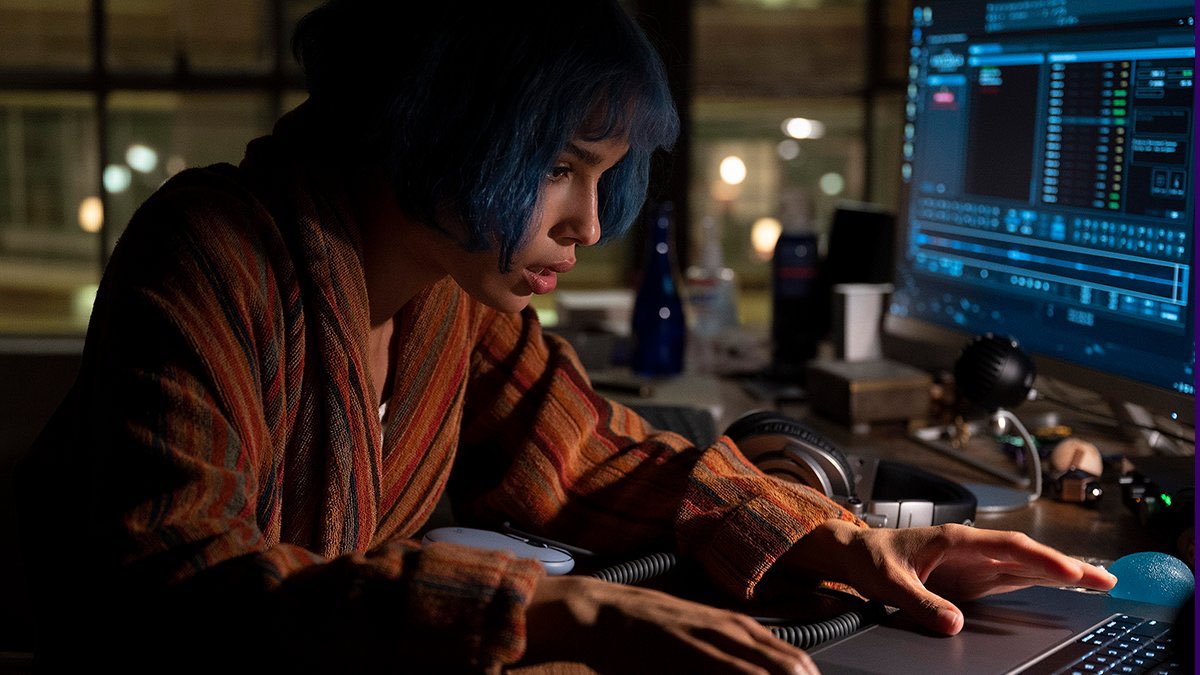
The genius of Steven Soderbergh often comes down to his seemingly limitless ability to innovate behind the camera. Whether it be experimenting with the lens, formatting, or the camera’s hardware, he never ceases to stop his pursuit of creativity. This makes the surprisingly simple setup of Kimi’s cinematography in the beginning all the more pleasurable. Shifting between tight interiors of Seattle office buildings and apartments, under his pseudonym Peter Andrews, Soderbergh finds the beauty of simplicity in wide, canted angles and minimal wide shots. But when the paranoia of the back half kicks in, the camera becomes hectic and shattered, and it goes further to reflect the psyche of the film’s protagonist. What the director does with this bare-bones setup is create a sweeping spectacle in the confines of claustrophobia. – Erik N.
Murina (Hélène Louvart)
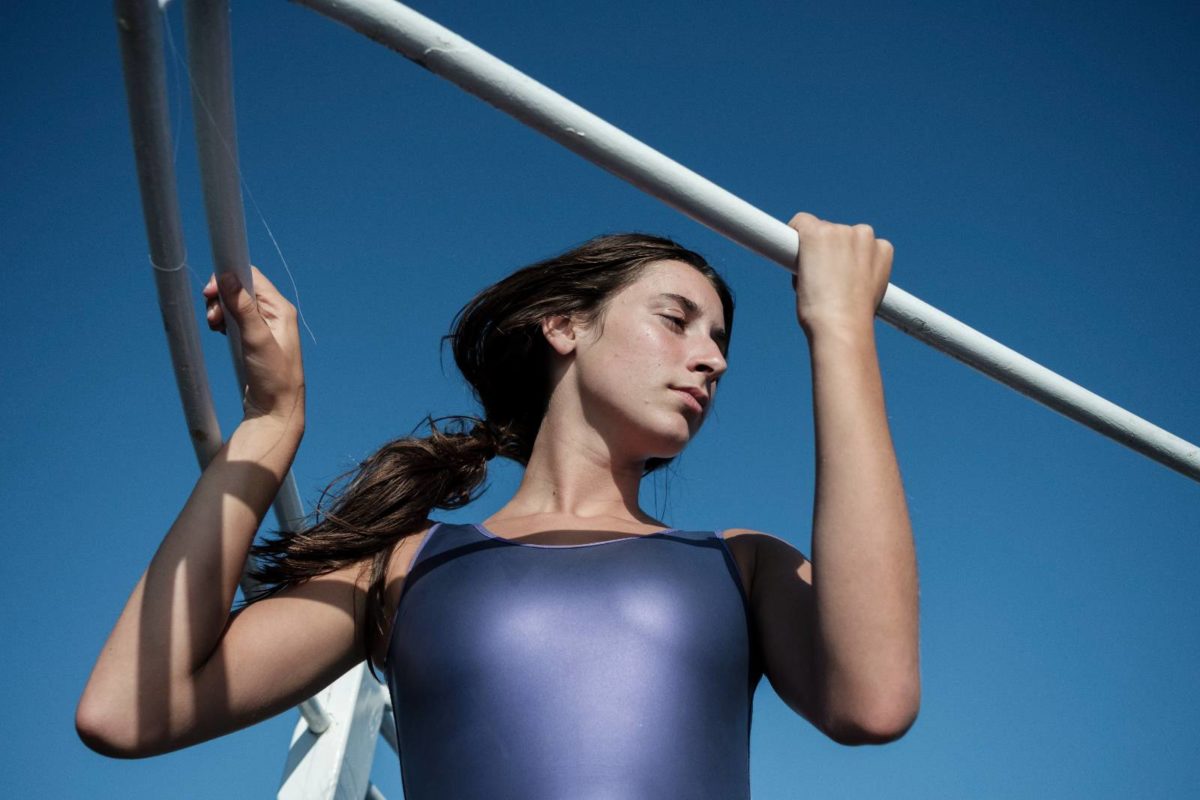
In one of many brilliant decisions when it came to crafting her directorial debut, Antoneta Alamat Kusijanović brought on Hélène Louvart, the legendary cinematographer behind Happy as Lazzaro, Never Rarely Sometimes Always, Pina, The Invisible Life of Euridice Gusmao, Maya, and more. With her keen skill in extracting the textures of every surface and body that her camera comes across, this coming-of-age story is given immense weight and momentum in every frame. From immersive underwater sequences that could go toe-to-toe with the best of James Cameron to a radiant, rocky seaside that acts like an emotional harbor of all of our lead’s frustrations, Louvart’s expert touch shows why she is one of the best cinematographers working today. – Jordan R.
The Northman (Jarin Blaschke)
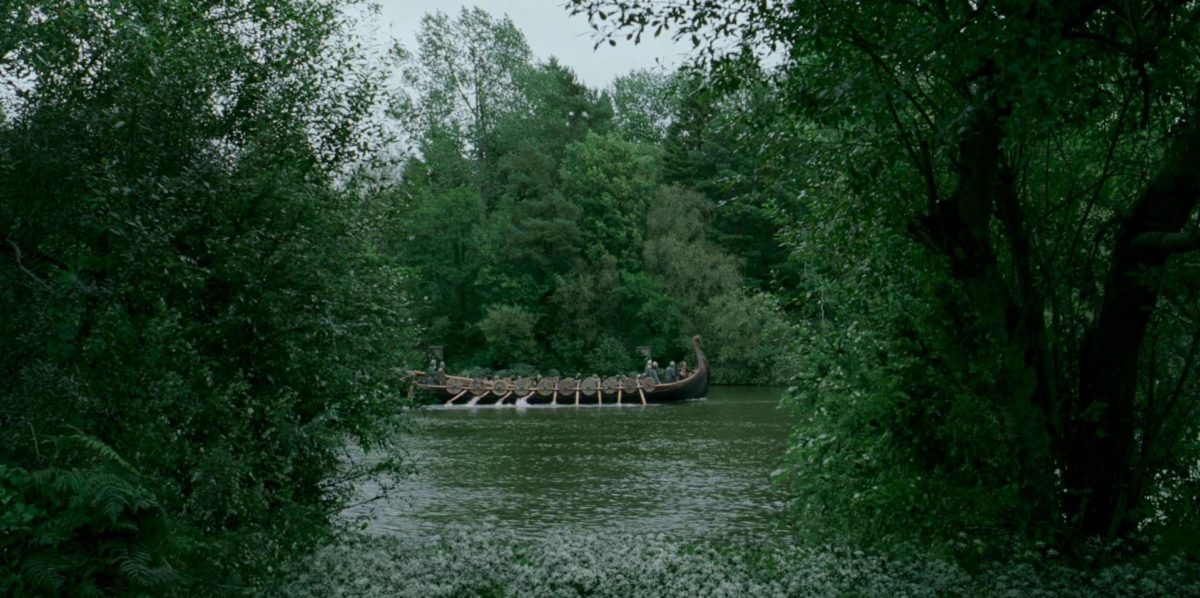
Even though The Northman is the largest scale that director Robert Eggers has worked with, the lingering camera retains a narrow focus. Working almost entirely in long, arduous takes with little camera movement, Jarin Blaschke simplified the cinematic language to transport us into Eggers’ psychedelic world of Viking shamanism and rebirth. Soaking frames in cosmic and surreal imagery—while also taking the camera to the gates of hell as fires ignites every single inch of an epic sword battle—The Northman lives up to its visions of Valhalla. – Erik N.
One Fine Morning (Denis Lenoir)
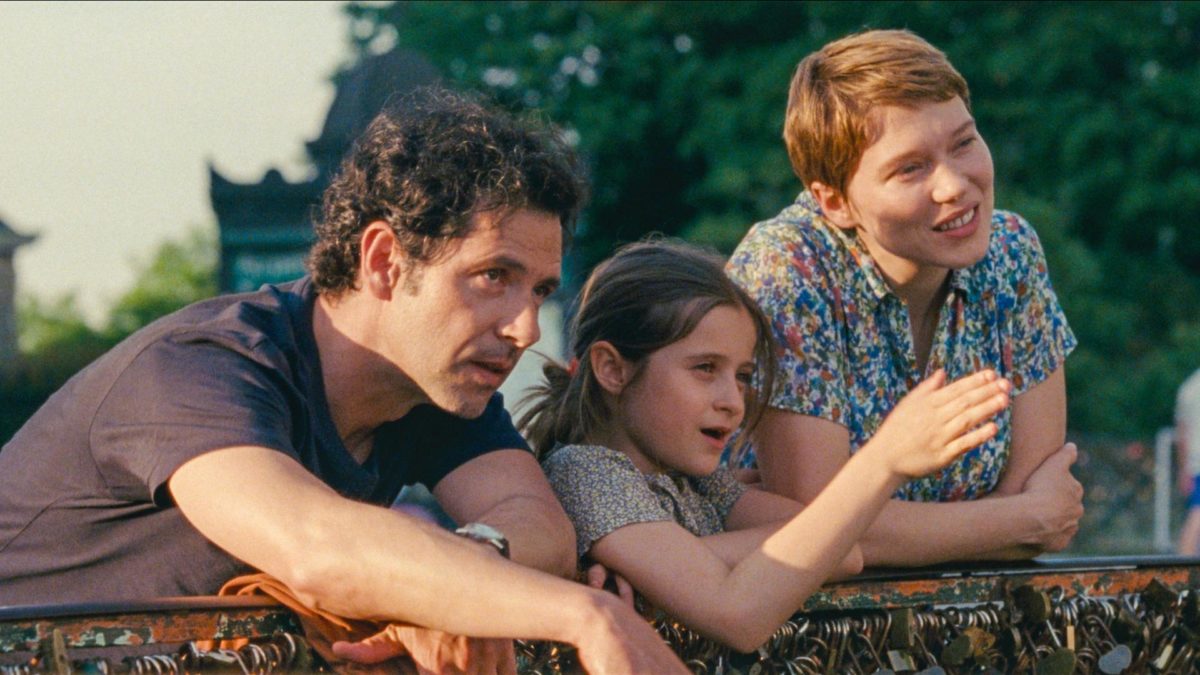
Building on his collaboration with Mia Hansen-Løve on Bergman Island, cinematographer Denis Lenoir brings a cool, engaging gloss to One Fine Morning. Empathy and unobtrusiveness were key in a story that charts the decline of Georg Kienzler (Pascal Greggory) before the eyes of his helpless daughter Sandra (Léa Seydoux). The camera’s gaze is almost dispassionate, as if both Hansen-Løve and Seydoux were reluctant to expose the heartbreak and despair underneath the film’s middle-class settings. But Lenoir still singles out emotionally telling moments, like a technically demanding close-up of Seydoux gazing out a bus window at night. Hansen-Løve’s schedule meant Lenoir had to share cinematography duties with Yorick Le Saux on Olivier Assayas’s Irma Vep. The difference between the two projects—one experimental and visually daring, the other quick-footed but restrained—shows the breadth of Lenoir’s skill. – Daniel E.
Return to Seoul (Thomas Favel)
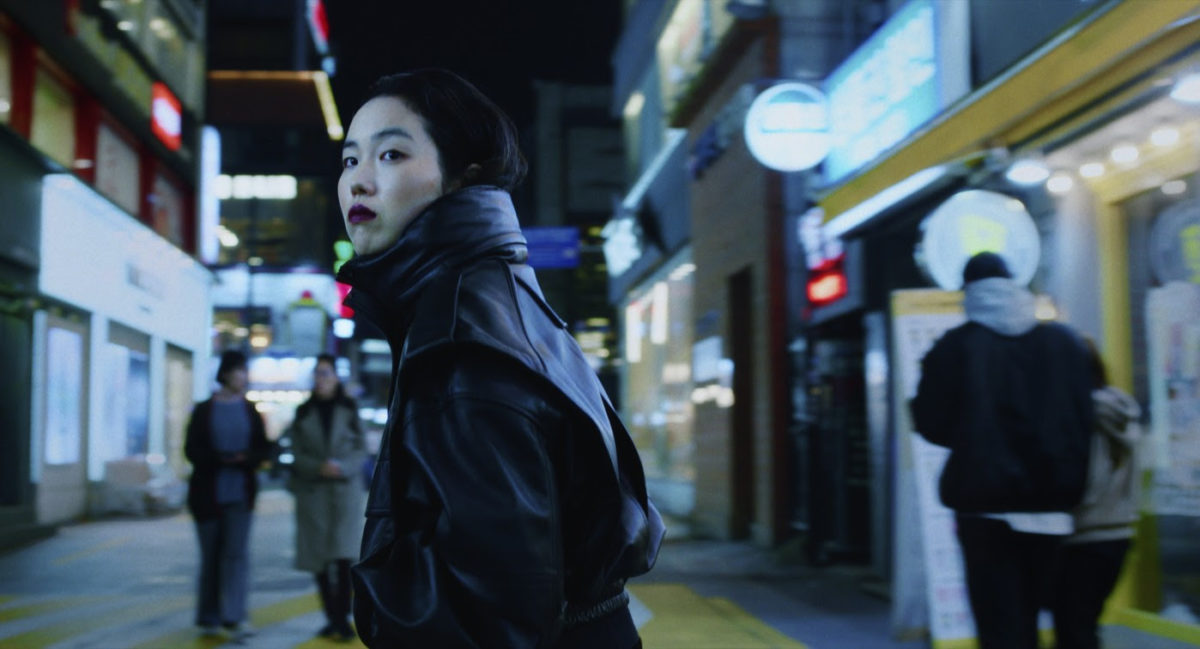
The chaos of Return to Seoul’s adoption story mirrors its cinematography from Thomas Favel. Park Ji-Min’s Freddie is always on the move; she’s dancing, kissing, and running her way through Seoul as she searches for a sense of family and identity. Favel’s slick, often rainy shooting reflects Freddie’s frenzied, fervent nature. She becomes a body amongst a sea of others, meshing by sweating into the culture. – Michael F.
RRR (K. K. Senthil Kumar)

Cinematographer K. K. Senthil Kumar has collaborated with director S.S. Rajamuoli for over a decade and, in their greatest triumph yet, they have delivered the spectacle of the year. Every scene of RRR is conceived and shot in order to elicit the strongest feelings of euphoria in its audience possible, from the expertly lit battle sequences to the exuberant dance numbers to even shooting what could be mundane dialogue sequences with a maximalist flair. After the dwindling creative output of Hollywood blockbusters, due particularly (but not exclusively) to their rote cinematography, it’s refreshing to see an action blockbuster conveyed with such ingenuity. – Margaret R.
The Shepherdess and the Seven Songs (Ranabir Das)
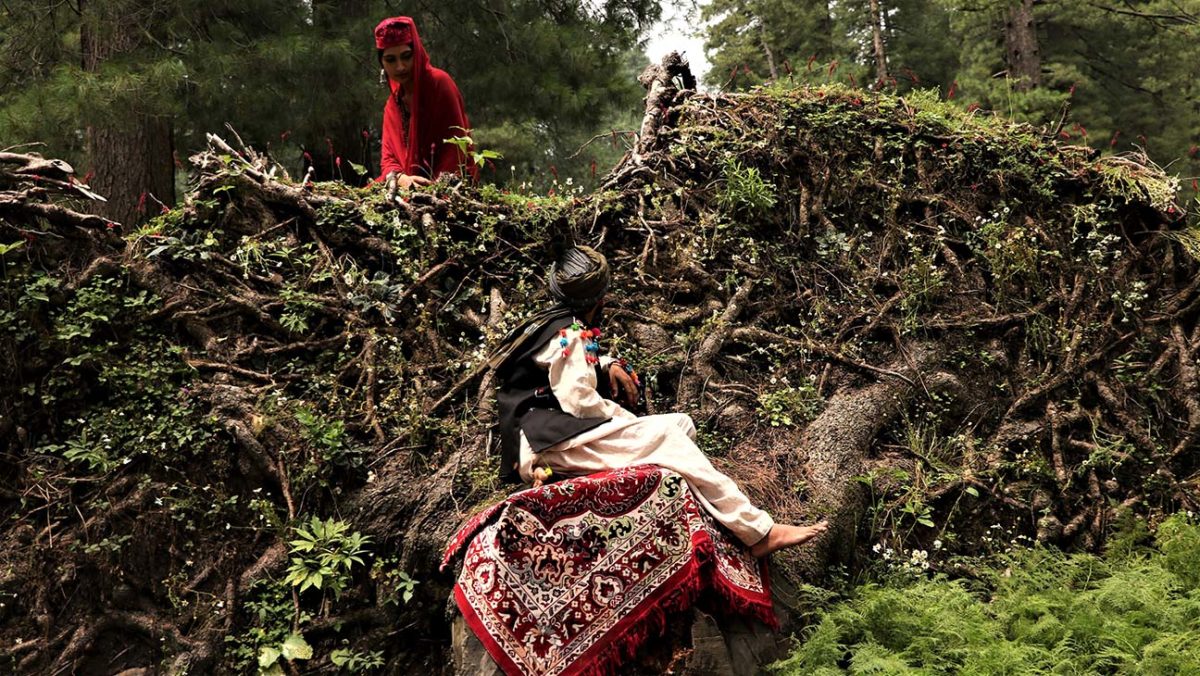
While its release was a fairly quiet one earlier this year, if you had the chance to experience the ravishing visuals of The Shepherdess and the Seven Songs on the big screen, there should be no question why it deserves a mention. Set in the Kashmir region of northern India, Pushpendra Singh’s fairytale is grounded in a respect for nature, and Ranabir Das’ patient cinematography honors the poetry of this vision. With long, tranquil takes, this story, split over seven chapters, slowly and beautifully unfolds, with the highest praise going to the meditative visual journey. – Jordan R.
The Tale of King Crab (Simone D’Arcangelo)
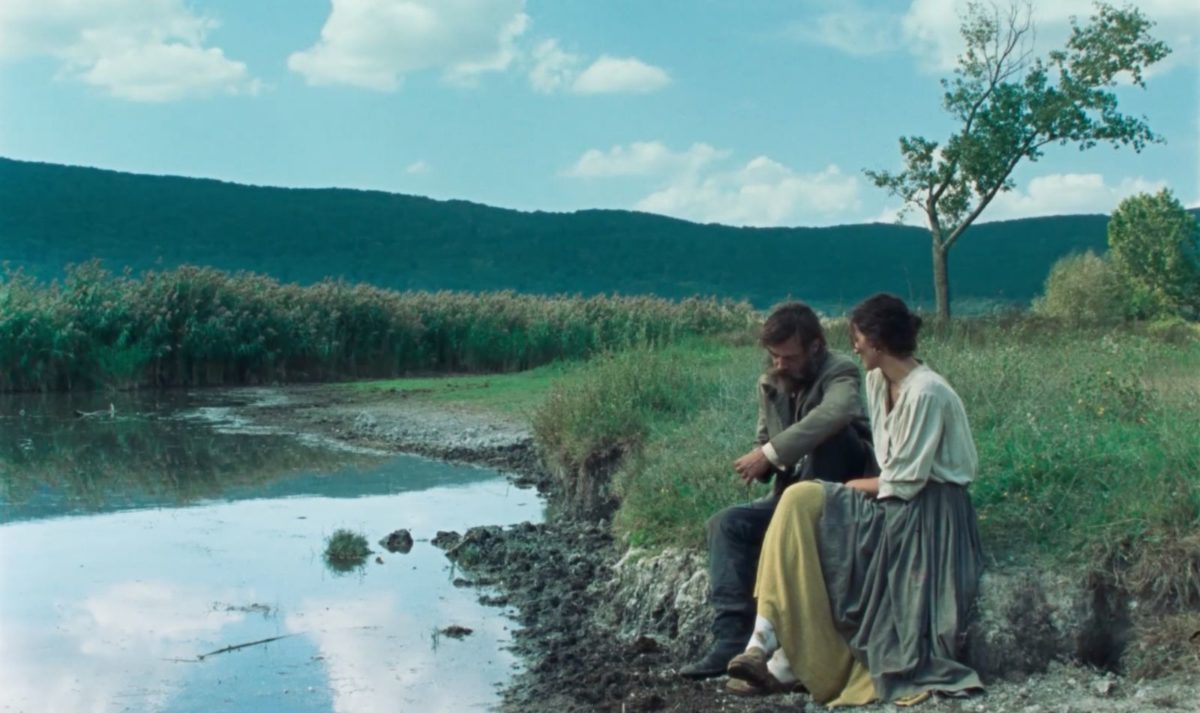
Akin to Alice Rohrwacher’s Happy as Lazzaro, King Crab is a story that comes in two polar yet irreplaceable parts, each separated by years and space and tragedy. Working with cinematographer Simone D’Arcangelo, Alessio Rigo de Righi and Matteo Zoppis create a world of dreamlike moments: Emma arriving in traditional dress to lead the procession through the village; Luciano crashing the prince’s party to the hypnotic war drums of Vittorio Giampietro’s score; and, much later, a mountain lake that shimmers with all that lies below. It is that fleeting hint of myth that sets De Righi and Zoppis’ debut apart and what ultimately casts the most beguiling spell. – Rory O.
Taming the Garden (Salomé Jashi and Goga Devdariani)
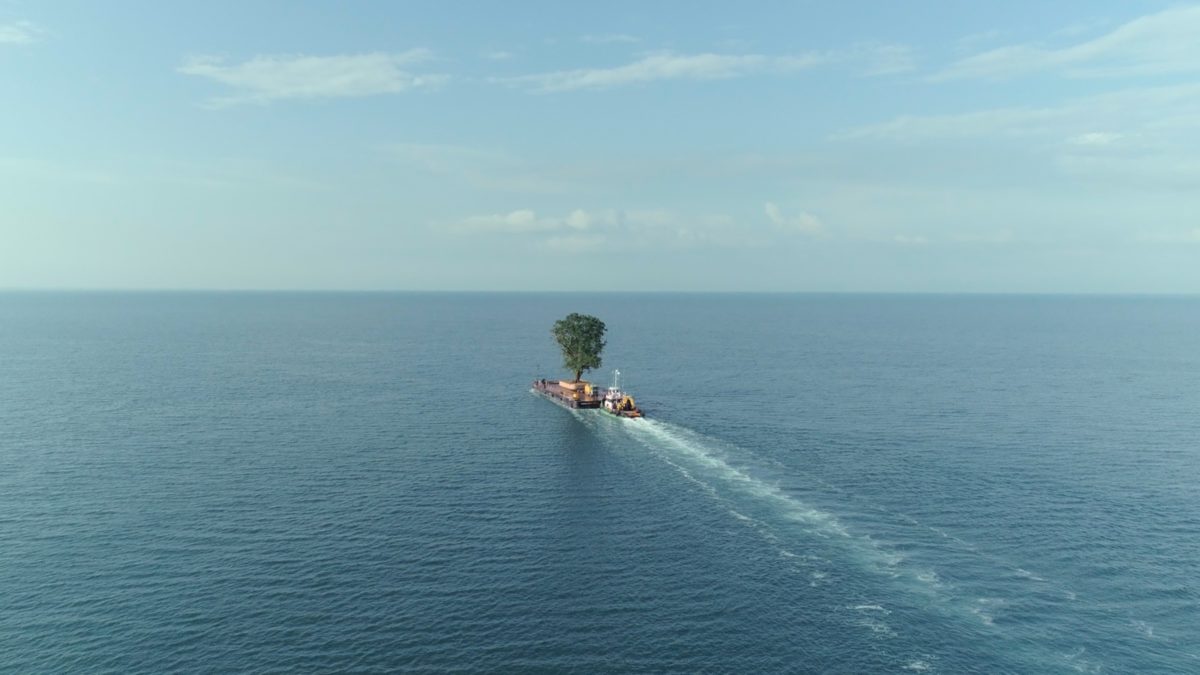
Salomé Jashi’s visually striking observational documentary Taming the Garden takes a journey through the country of Georgia, almost entirely focused on the grueling task of transplanting majestic, century-old trees many, many miles by land and sea. Composed of staggering stationery shots, we see the detailed process of digging the tree out, using dozens of colossal pipes drilled beneath the ground. Then the transport by night, employing flashlights and not one, but two massive trucks driving slowly side-by-side, with the hulking tree emerging from the darkness like a Tyrannosaurus Rex out of Jurassic Park. – Jordan R.
TÁR (Florian Hoffmeister)
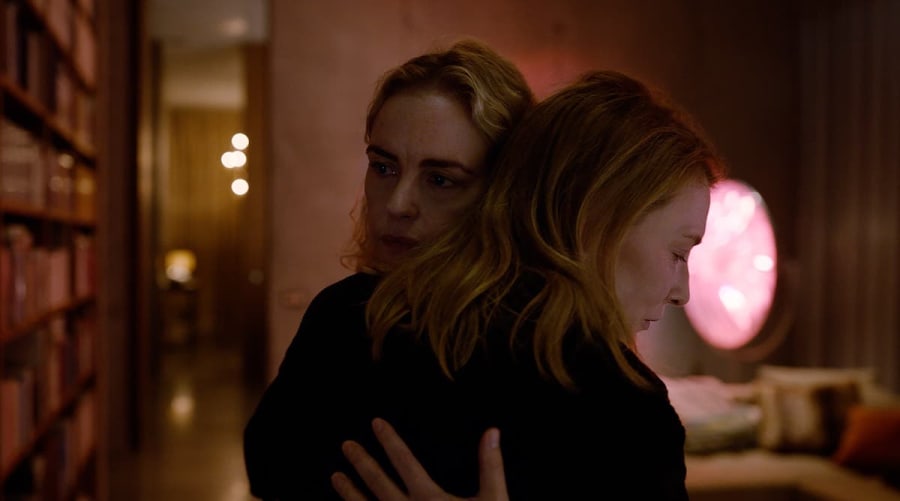
Not a single frame is wasted in TÁR, with the architecture taking precedence to establish the high couture world Blanchett’s character inhabits. There is also, of course, the 12-minute take in the Julliard classroom, with Florian Hoffmeister’s camera led by Lydia Tár’s movements, adding to the disposition of control the character exudes. Providing a natural if icy slickness, the cinematography lends a grounded feel to this psychological unraveling and marks a high point in Todd Field’s small but impressive filmography. – Margaret R.
Top Gun: Maverick (Claudio Miranda)
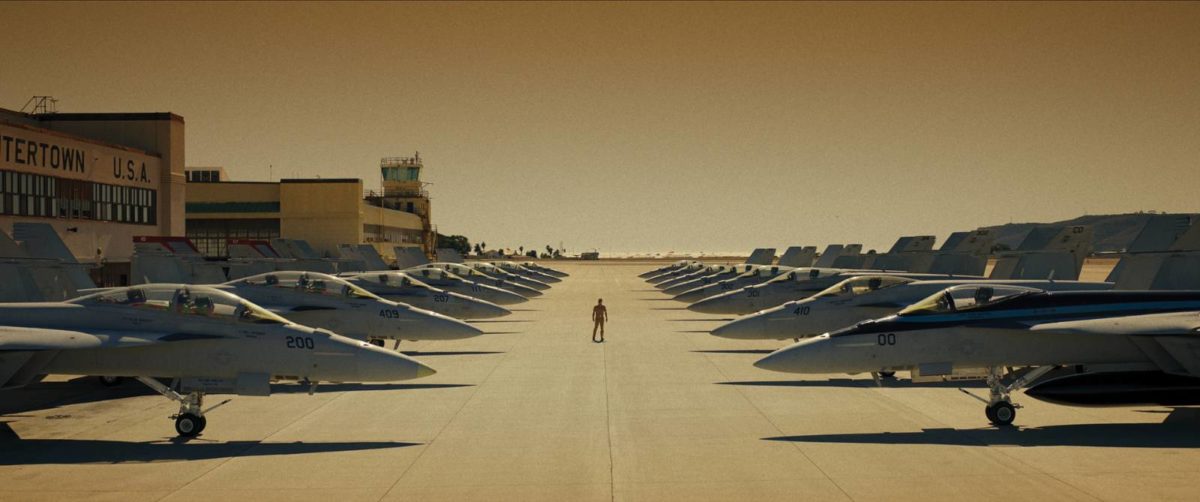
The best cinematography often comes out of ingenuity and innovation. Flying high to fully immerse an audience in the air-shattering, death-defying spectacle of raging F/A-18 against daytime skies, Claudio Miranda and close collaborator Joseph Kosinski knew they could spare no space. The two created a new look for Top Gun: Maverick while also paying homage to the original. Living in the shadow of an accomplished visual stylist like Tony Scott is no easy feat. Miranda’s mounted cameras and Tom Cruise’s dedication to staying in the cockpit engineered one of the most awe-inspiring and entertaining spectacles of 2022. With a warmer look than the original and a light dedicated to making Tom Cruise’s Mach-10 flight appear as a deity, the gorgeous vistas and atmosphere-breaking shots made for a deliciously American visual feast. – Erik N.
The Tsugua Diaries (Mário Castanheira)
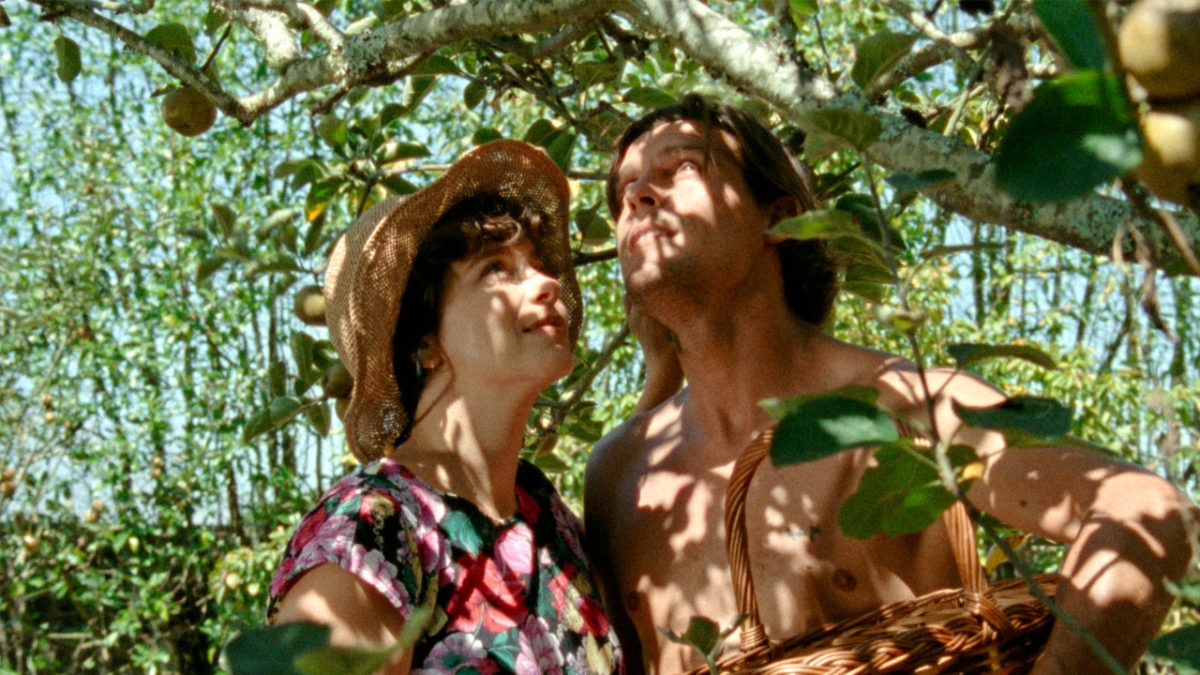
Maureen Fazendeiro and Miguel Gomes’ inverted Covid film The Tsugua Diaries occupies an odd aesthetic space at the intersection of spontaneity and an affected unreal. The boldest evocation of that visual texture comes in the scattered scenes with the lazily strobing colored lights. But whether shooting through the crosshatched sides of a conservatory or sun-dappled branches, DP Mário Castanheira and the two directors imbue the images with an unusually comforting envelopment of shadow and light. And in tandem with the diaphanous look of the lens, it’s a film that reflects its own unique production circumstances. – Michael S.
Honorable Mentions
- Anaïs in Love
- Athena
- Avatar: The Way of Water
- The Batman
- Los conductos
- A Couple
- Empire of Light
- Everything Everywhere All at Once
- The Fabelmans
- Flux Gourmet
- Funny Pages
- Întregalde
- Montana Story
- Nope
- Three Thousand Years of Longing
- Retrograde
- Saint Omer
- Strawberry Mansion
- White Noise
